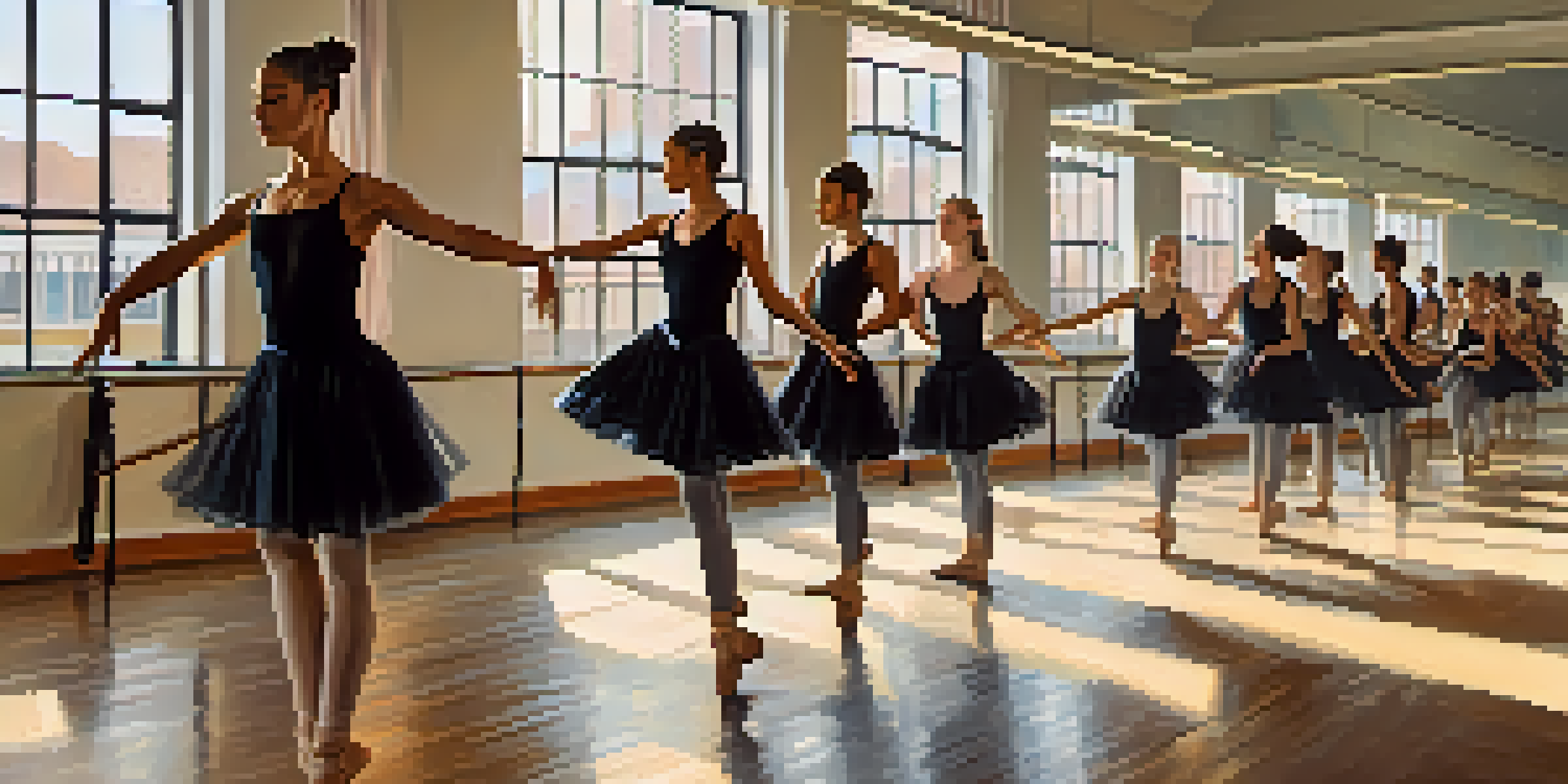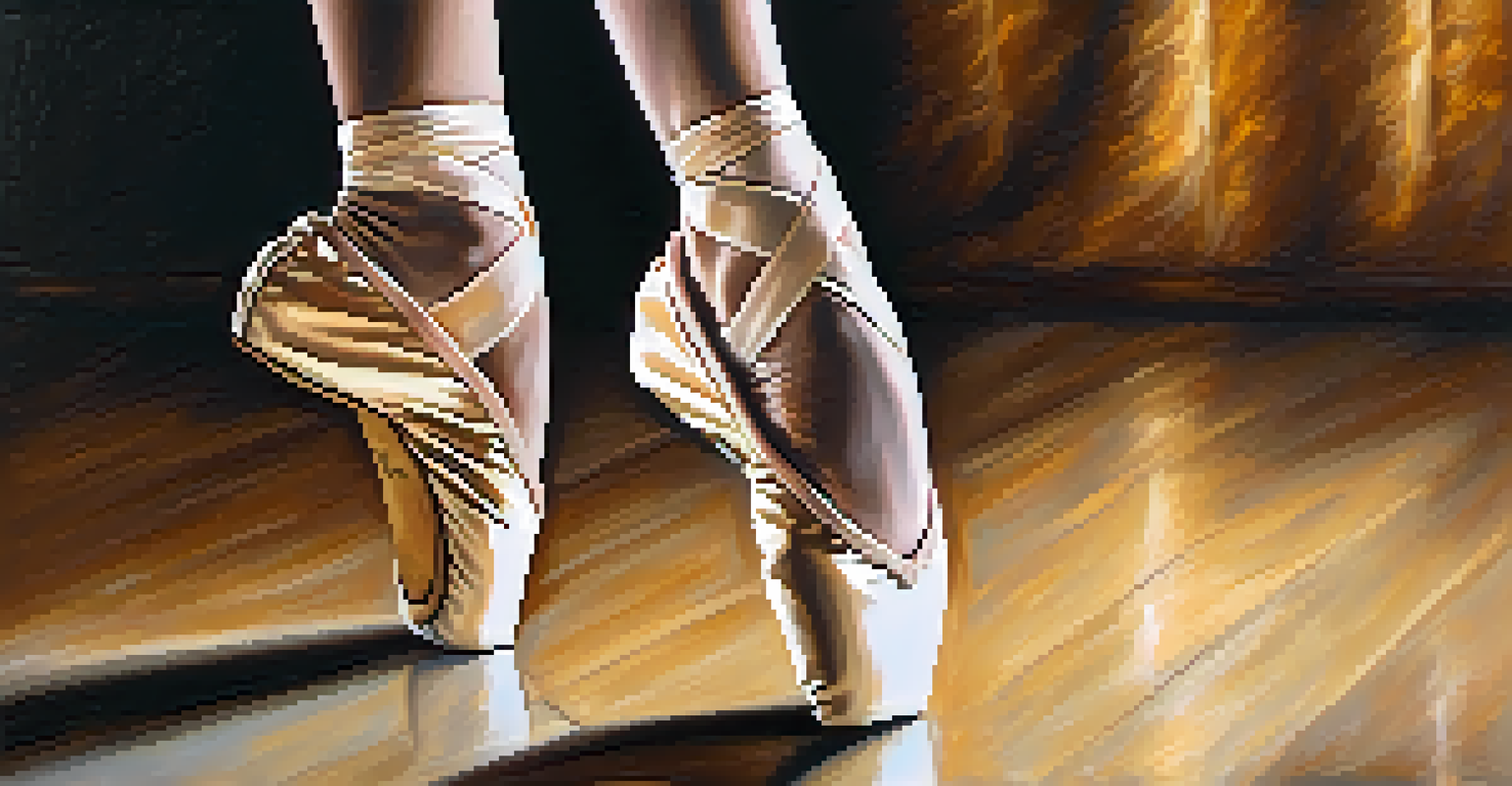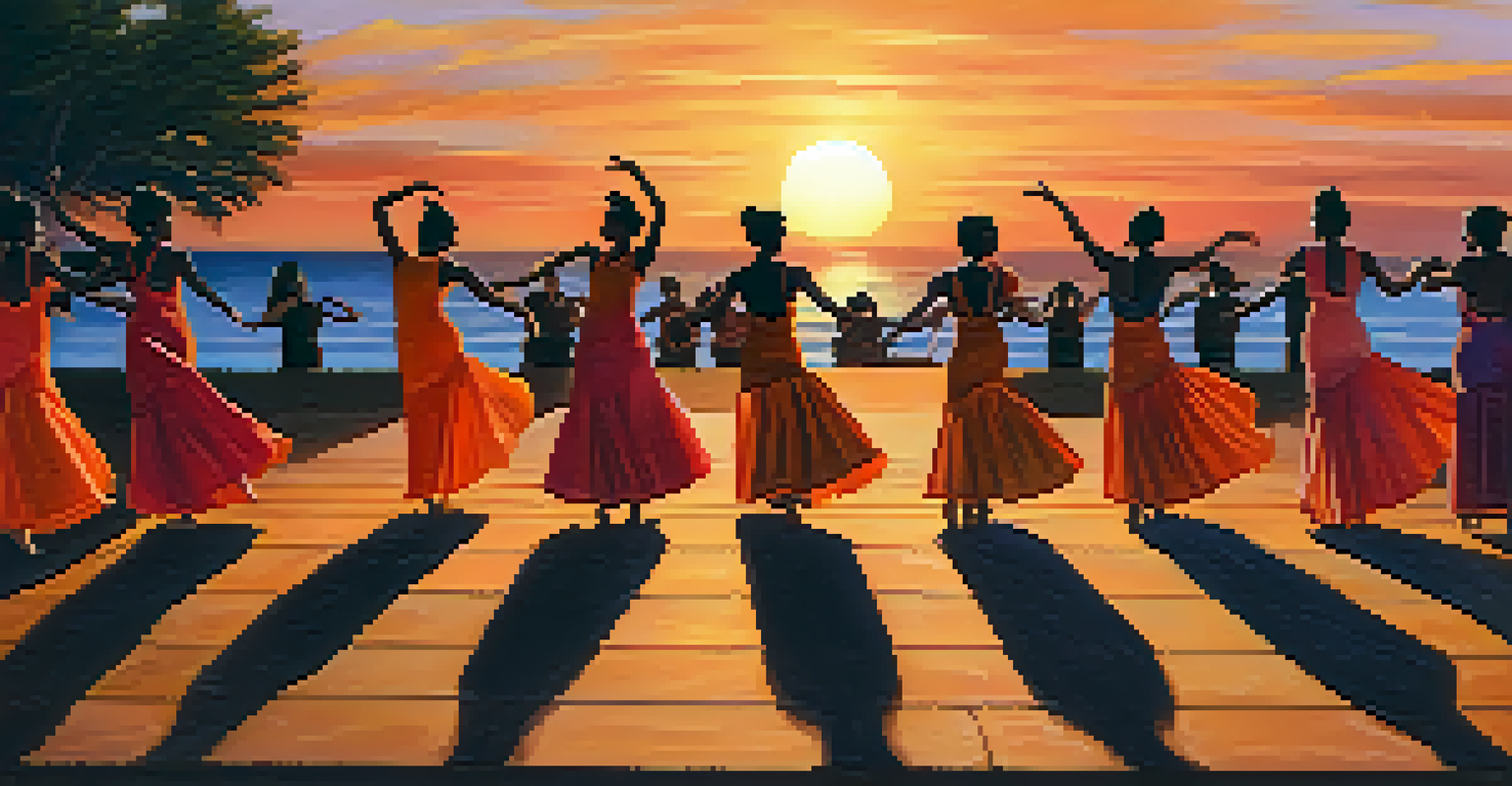Dance Notation Systems: A Guide for Choreographers and Dancers

What is Dance Notation and Why is it Important?
Dance notation is a system for recording dance movements in a written format. This allows choreographers and dancers to preserve and share their work beyond mere performance. Just like musical notation helps musicians read and play music, dance notation captures the nuances of movement, making it essential for both teaching and preserving choreography.
Dance is the hidden language of the soul.
By using notation, choreographers can create a lasting record of their dances, which can be revisited and reinterpreted by future generations. This is particularly important in a world where many dance forms are at risk of being lost. For dancers, understanding notation can deepen their practice, enabling them to learn and remember complex sequences more effectively.
Ultimately, dance notation bridges the gap between creative expression and structured learning. It allows for a broader dissemination of choreography, fostering collaboration and innovation within the dance community.
Overview of Popular Dance Notation Systems
Several dance notation systems exist, each with its own unique approach and benefits. The most widely recognized systems include Labanotation, Benesh Movement Notation, and Eshkol-Wachman Movement Notation. Each of these systems provides a different way to document movement, catering to the diverse needs of choreographers and dancers.

Labanotation, for instance, uses symbols to represent various movements and their qualities, making it particularly visual and intuitive. On the other hand, Benesh Movement Notation focuses on the body’s position in space and is often preferred for its clarity in conveying ballet movements. Eshkol-Wachman Movement Notation offers a more abstract approach, emphasizing the dynamics of movement rather than just the positions.
Dance Notation Preserves Choreography
Dance notation enables choreographers to document their work, ensuring it can be revisited and reinterpreted by future generations.
Choosing the right notation system can depend on the style of dance, the preferences of the choreographer, and the intended audience. Understanding these different systems can empower dancers and choreographers to select the most suitable method for their work.
How to Read Dance Notation: A Beginner's Guide
Reading dance notation may seem daunting at first, but with some practice, it becomes much more manageable. Each notation system has its own set of symbols and rules, but they generally convey similar ideas about movement. Starting with basic symbols is key—these often represent simple actions like steps, turns, and jumps.
The dance is a poem of which each movement is a word.
For example, in Labanotation, a basic step might be represented by a simple line, while a turn could be depicted with a circular symbol. Familiarizing yourself with these foundational elements helps build comprehension. Many training resources are available, including online tutorials and workshops that focus on teaching the basics of dance notation.
As you become more comfortable with the symbols, you can start to decode more complex sequences. Practicing with notated dances and discussing them with experienced dancers can enhance your understanding and ability to interpret choreography accurately.
Benefits of Using Dance Notation for Choreographers
For choreographers, utilizing dance notation can significantly enhance their creative process. Not only does it provide a clear and concise way to document choreography, but it also opens up opportunities for collaboration. When working with dancers or other choreographers, having a notated version of the dance can facilitate clearer communication and interpretation.
Additionally, notation allows choreographers to experiment with their work more freely. They can easily make adjustments and keep track of changes over time, which is particularly useful in a rehearsal setting. This adaptability ensures that the core elements of the dance are preserved while still allowing for creative exploration.
Benefits for Choreographers
Using dance notation enhances communication and collaboration among choreographers and dancers, facilitating easier adjustments in the creative process.
Moreover, by documenting their choreography, choreographers can create a portfolio that showcases their unique style and approach. This can be invaluable for career development, as it provides tangible evidence of their work for applications, grants, and performances.
Challenges Faced When Using Dance Notation
While dance notation offers many benefits, it also presents several challenges. One major difficulty is the learning curve associated with mastering different notation systems. For dancers and choreographers unfamiliar with notation, the initial process can feel overwhelming, leading to frustration and confusion.
Another challenge is that notation can sometimes fail to capture the emotional nuances of dance. While it effectively communicates technical movements, the subtleties of expression and interpretation may not always translate well on paper. This can lead to a disconnect between what is notated and how it is performed.
Lastly, not all dance styles lend themselves easily to notation. Certain improvisational or contemporary forms may be challenging to document accurately, leading to debates about the fidelity of the notation. Navigating these challenges requires a balance between the benefits of notation and the inherent fluidity of dance.
Incorporating Dance Notation in Dance Education
Integrating dance notation into dance education can enrich the learning experience for students. By teaching notation alongside practical dance skills, educators can provide students with a deeper understanding of choreography and movement analysis. This dual approach helps students appreciate the technical and artistic aspects of dance.
Moreover, familiarity with dance notation prepares students for professional environments where notation is often used. In the dance industry, being able to read and interpret notation can be a significant asset, opening up job opportunities and enhancing collaboration with choreographers. Students who are proficient in notation may find themselves at an advantage in auditions and workshops.
Challenges of Learning Notation
Despite its advantages, mastering dance notation can be challenging due to its learning curve and the difficulty in capturing the emotional nuances of movement.
Incorporating notation into the curriculum can also encourage creativity. As students learn to notate their own choreography, they develop critical thinking skills and a greater sense of ownership over their work. This practice fosters a culture of innovation and exploration in dance education.
Future Trends in Dance Notation Systems
As the dance world evolves, so too do the systems used to document it. Future trends in dance notation may see the integration of technology, such as digital notation tools and apps. These advancements aim to make the notation process more accessible and user-friendly, particularly for younger generations of dancers and choreographers.
Additionally, there is a growing emphasis on creating notation systems that accommodate diverse dance styles. As dance continues to blend and evolve, notation systems will need to adapt to capture new movements and expressions. This flexibility will ensure that notation remains relevant and useful for a wide range of dance forms.

Furthermore, collaborative projects between technologists and dance experts could lead to innovative solutions that enhance the way we document and teach dance. As the field of dance notation continues to grow, it will undoubtedly play a vital role in preserving the art form for future generations.